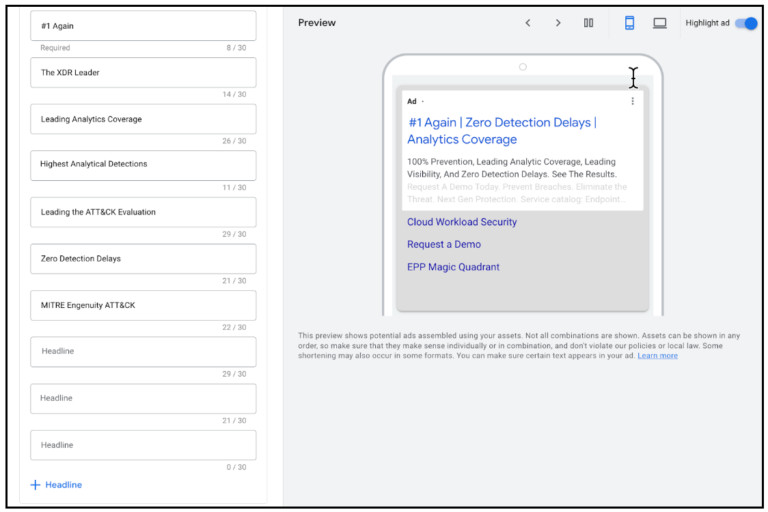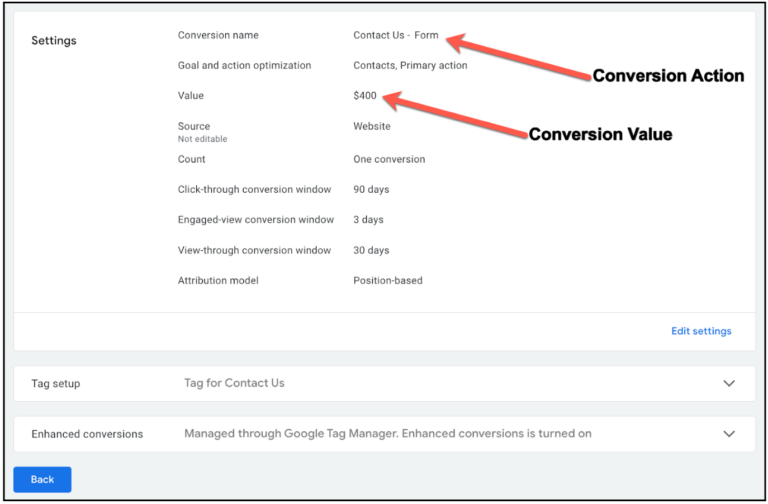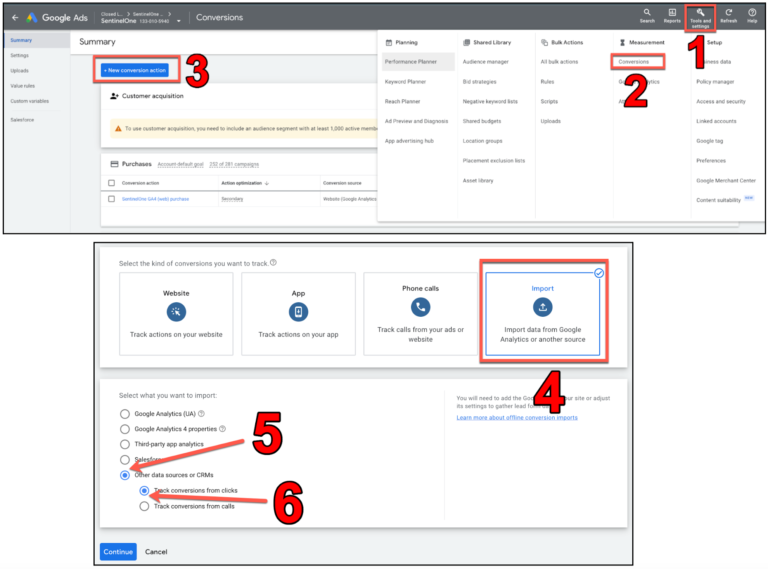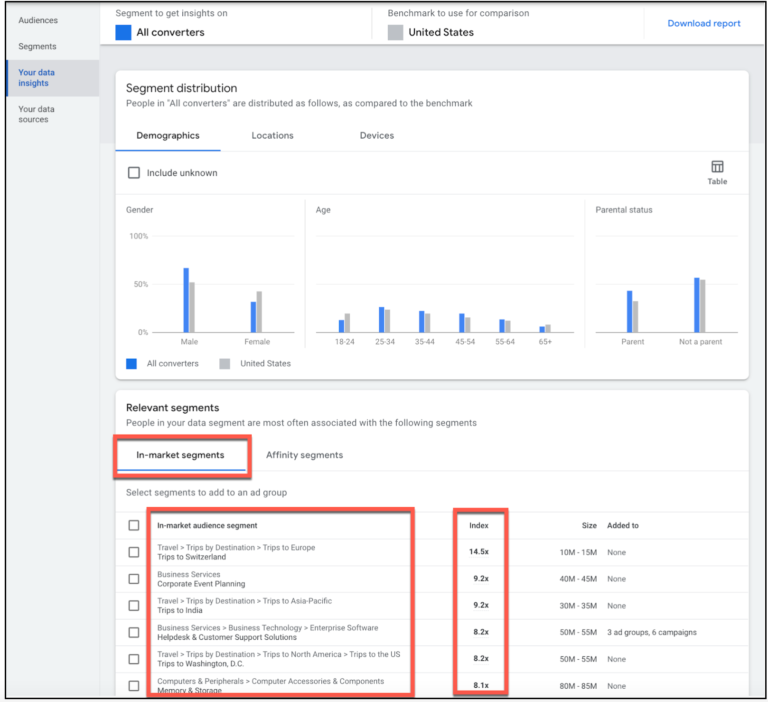Admit it: You have a box of cereal or a bag of chips in your kitchen right now that has been sitting there for a very long time.
Whether you put your cereal in a Tupperware container or clamp that bag of chips with an industrial-strength hair clip to keep it fresh, we all know those things have been sitting there unattended for too long.
Chances are that no matter how good they were at first, and how well you prepared them for long-term storage, they were no match for Father Time.
Anything can go stale – and everything eventually does.
That includes your evergreen Google Ads Search campaigns.
But the good news is that, unlike cereal and chips, there are things that you can do to freshen up all those evergreen Google Ads campaigns.
Let’s get into it.
[Recommended Read:] PPC Trends 2024
What Are Stale & Evergreen Campaigns
First, we need to get on the same page about exactly what constitutes stale and evergreen.
Evergreen PPC Campaigns Defined
Evergreen PPC campaigns are campaigns you always have running mainly because they contain core, targeted keywords common to your particular business, industry, or product you are selling.
Evergreen PPC campaign’s search demand is generally steady throughout the year. While they may have occasional sales spikes, they generally only drive a small portion of their interest from factors related to seasonality.
Evergreen campaigns get a healthy amount of searches month after month and year after year.
In case it still might be unclear, here is an example.
A retail store selling clothes and a restaurant selling pies will have consistent search volumes in some campaigns. Yet, they’ll have noticeable spikes during times like Christmas or Father’s Day.
These are normal and considered evergreen because users would search for these items all year long, even without those holidays.
On the other side, businesses may have campaigns for Santa costume rentals or snow plow services.
Since these campaigns would be highly dependent upon seasonality, even if you left them running all year long, they would not be considered true evergreen campaigns, because the vast majority of their searches will be done in a very small window of time during the year.
Stale PPC Campaigns Defined
The definition of a stale campaign can be different from person to person, or even from campaign to campaign.
However, in this instance, I am referring to campaigns running for a considerable amount of time that are no longer getting improvements in traditional key performance indicators (KPIs) like:
- Click per action (CPA).
- Return on ad spend (ROAS).
- Search impression share (IS).
- Cost per lead (CPL).
- Or any other important metric for a specific campaign.
These campaigns might have become stale because you haven’t done anything to optimize them for a few months, as you are not receiving enough incoming data to make decisions (or a hundred other possible reasons).
The point is they are important campaigns that aren’t bringing in the amount of traffic they used to, the conversions are of lower quality, or it is just getting more and more expensive to bring in conversions at all.
Why Evergreen PPC Campaigns Are Important
Evergreen campaigns often make up the majority of the PPC traffic a business receives from week to week. This traffic generally comes from the base of your entire PPC marketing efforts and contains 60 to 80% of your weekly clicks and conversions.
If you’re like many PPC pros, you probably spent weeks building your evergreen campaigns. You added to them, optimized them, pruned them, and probably gave them nearly all your attention until they performed well and provided the conversions your client, boss, or business needed.
But then, you started building other campaigns. And time passed. The market started to change, competitors changed, and your campaigns changed.
As we know, PPC campaigns don’t magically improve on their own; they only get worse if ignored for long periods.
Evergreen campaigns probably bring in most of your digital marketing clicks, conversions, and sales.
It’s nearly impossible for these campaigns not to bring in the bulk of your important digital conversions because they are always running, and probably contain the small number of keywords that make up the vast majority of your most important KPIs.
4 Strategies To Refresh Evergreen Google Ads Campaigns
Strategy 1: Shock The Algorithm
In my experience, algorithms are like people. They get lazy, quit working, or stop trying to improve themselves without someone pushing them to do better.
That someone is you.
Shocking the algorithm that controls your evergreen campaign is essential to restarting optimization.
Here are some optimizations you can focus on that will get your algorithm back in the gym:
- Add more conversion actions.
- Change the bid strategy.
- Add new keywords.
- Add new ad copy.
- Change the device bid adjustment.
- Optimize for value.
Google itself even backs up this strategy and mentions additional things you can try:
“[You] might tweak your ad creative, improve your landing page, or design a better mobile shopping experience on your retail site. All these optimizations will help an automated bidding algorithm perform even better.”
Now, you don’t have to do all these things – but if you give one or two of these tactics a shot, they can provide the algorithm with new information.
As a result, your sleepy algorithm just might come to life again.
-
 Screenshot from Google Ads, November 2022
Screenshot from Google Ads, November 2022
Something as simple as changing ad copy can reignite your algorithm. Check out this SEJ article to learn how to write great PPC Ads.
[Discover:] Expert insights & actionable tips for PPC in 2024
Strategy 2: Use Smart Bidding Strategies
Not too long ago, there was a time when using a modified broad match keyword match type and manual CPC bidding was a good strategy. This strategy often outperformed Google’s automated “Smart” Bidding strategies.
Google terminated the modified broad match keyword match type in August of 2021. Many PPC managers, including myself, were forced to explore available options, most of which were Google’s Smart Bidding strategies.
As I have experimented with nearly all bid strategies that Google offers over the past 18 months, Google has made great strides in the automated bidding strategy department, and the results have been promising in most campaigns over the past year.
Ensuring your evergreen campaigns are utilizing Smart Bidding strategies, especially if you are using broad match keywords in the campaign, allows Google to use machine learning and thousands of customer data points to deliver the right customer.
I highly recommend putting a Smart Bidding strategy in place for each evergreen campaign, but only if the campaign meets the following criteria:
- Maximize conversions: Minimum of 15 conversions per month.
- Maximize conversion value: No minimum conversions, but make sure all conversion actions have values assigned to them according to their worth to your business or client.
- tCPA: Minimum of 30 conversions monthly.
- tROAS: Minimum of 15 conversions in the past 30 days.
-
 Screenshot from Google Ads, November 2022
Screenshot from Google Ads, November 2022
Make sure you have a value assigned if using Maximize conversion value. Find out way more about conversion value here.
Your campaigns must meet the requirements for the bid strategy you choose because, while Smart Bidding strategies may have powerful algorithms, they must have data to use. The more conversion data you provide, the better.
Make sure your budget supports campaigns so they can earn enough conversions every month to support your Smart Bidding strategy.
Strategy 3: Implement Offline Conversion Tracking
Implementing offline conversion tracking (OCT) might just be the best way to breathe new life into stale evergreen Google Ad Search campaigns.
To be clear, here is how Google describes OCT:
“Sometimes, an ad doesn’t lead directly to an online sale, but instead starts a customer down a path that ultimately leads to a sale in the offline world, such as at your office or over the phone.
By importing offline conversions, you can measure what happens in the offline world after your ad results in a click or call to your business.”
One warning about OCT is that it is technical to set up and not a walk in the park, even for those who have created OCT connections before.
However, while it is undoubtedly tricky to set up, the rewards are well worth the hassle.
Google claims that OCT can drive up to 30% cost efficiencies and 20% incremental revenue from connected campaigns.
Here are the first few steps to get started:
-
 Screenshot from Google Ads, November 2022
Screenshot from Google Ads, November 2022
Get a full tutorial on implementing OCT here.
And the absolute best part of implementing OCT is that it doesn’t cost any money. You don’t have to raise bids, add to your budget, or do extra work for an extended period.
Just by providing Google with additional information about your customers, a little further down the funnel, you can get noticeable efficiencies from your evergreen campaigns that have been running for years.
Strategy 4: Mine Your Own Data
A tried-and-true method of optimizing any search campaign, including evergreen PPC campaigns, is to mine your first-party data.
You can do this to get an edge for a single campaign or build an entire customer profile based on previous users’ actions and information.
Not only does Google Ads automatically gather a plethora of information on every user that has ever interacted with your ads, but there are various places to access this without even leaving the Google Ads platform.
Once you have gathered and analyzed all the data, you can use that information to make a wide variety of optimization decisions that can improve your stale, evergreen campaigns.
Where do you find all this data? Two places.
It might seem obvious, but some of the Google Ads side menus offer access to an incredible amount of information about how your customers act, and what they desire.
Here is a list of the platform side menus that likely contain essential and actionable information about your customer:
- Ad Schedule > Ad Schedule.
- Devices.
- Ad Performance.
- LP Performance.
- Audiences > Audience Segments (click the “Show Table” arrow to see Audience Segment performance).
- Audiences > Demographics.
You can discover so much just by viewing the data Google Ads provides you in the different campaign menus.
However, the insights can become even more profound if you dig a little deeper into the platform using sub-menus or the Tools & Settings menu.
This information can be found in the following locations:
- Tools & Settings > Shared Library > Audience Manager > Your Data Insights (see in pic below)
- Tools & Settings > Measurement > Attribution (and all the sub-menus in it)
- Account, Campaign or Ad Group Tab > Keyword Tab > Three Dots > Diagnose Keywords > Run Diagnosis.
-
 Screenshot from Google Ads, November 2023
Screenshot from Google Ads, November 2023
How incredible is this info!
Find out how to use all this data here.
[PPC Trends 2024] Download the free ebook →
Conclusion
The industry is constantly changing, so our campaigns should be too.
As a significant player in providing clicks, conversions and sales, evergreen PPC campaigns will always be worth your while.
Take the time to apply some of these tactics and breathe new life into your evergreen Google Ads campaigns.
More resources:
- How To Optimize Google Responsive Search Ads (RSAs)
- Real Estate PPC: Tips For Optimizing Google Ads Campaigns
- The Biggest PPC Trends of 2023, According to 22 Experts
Featured Images: Pasuwan/Shutterstock





